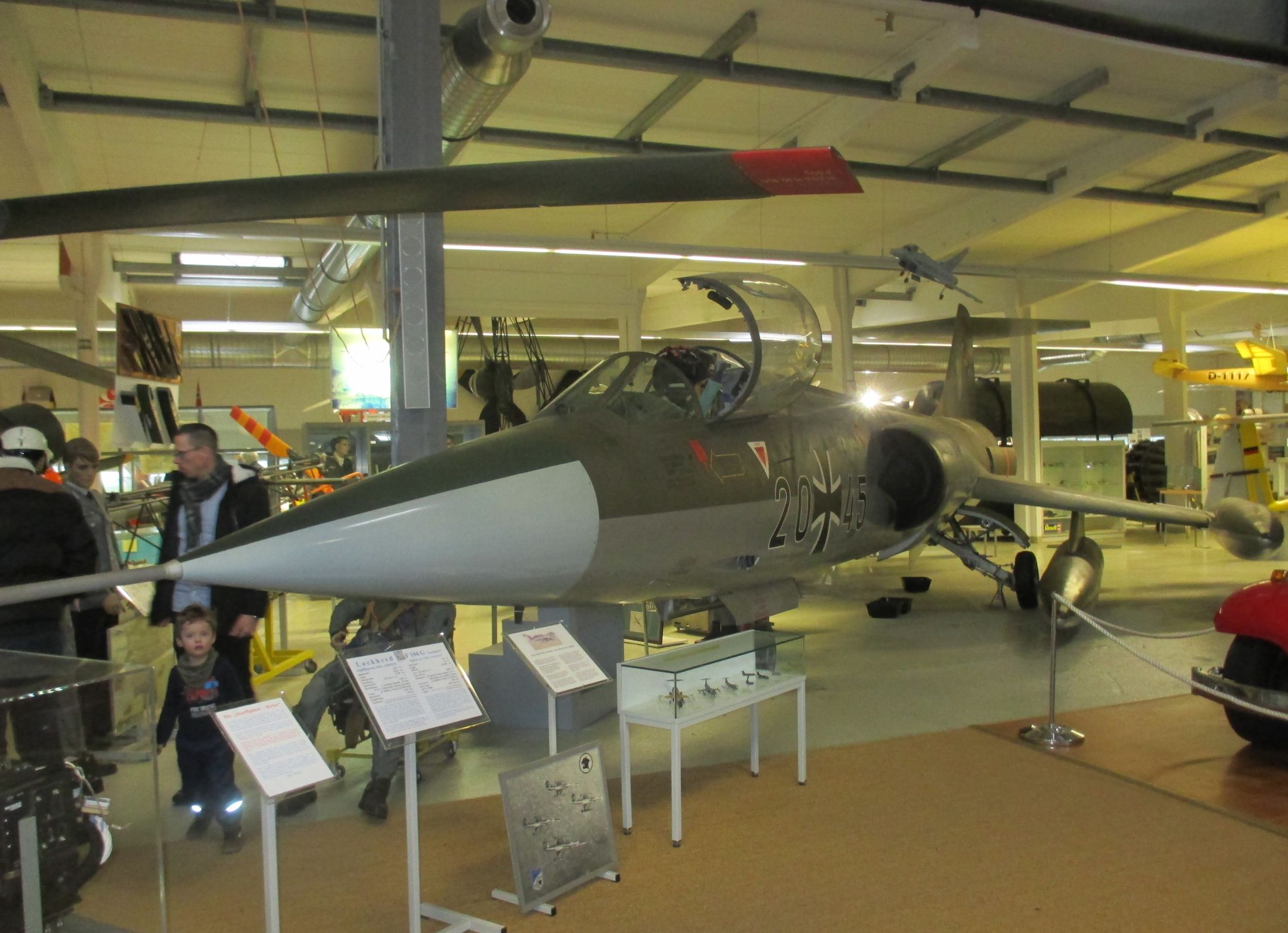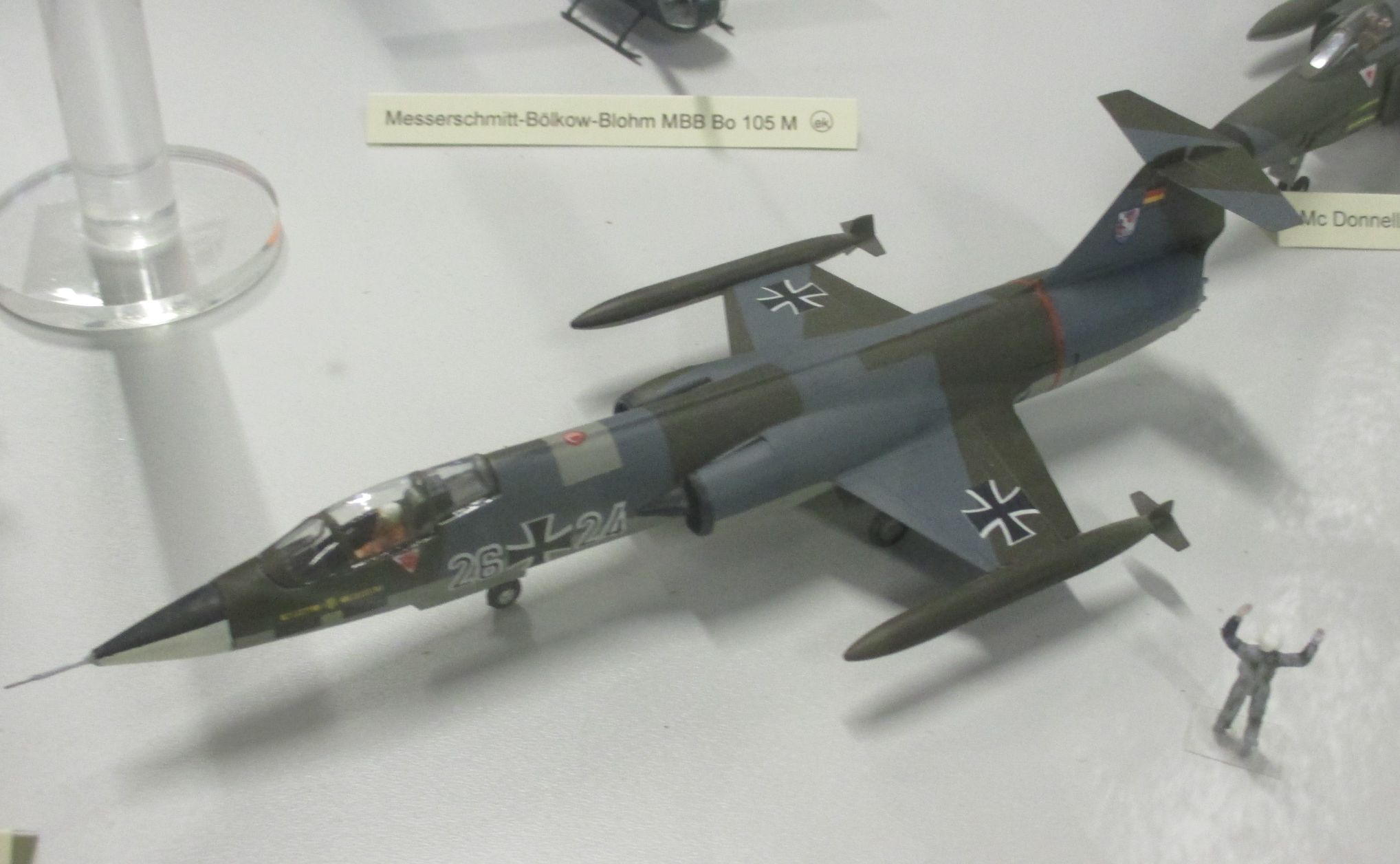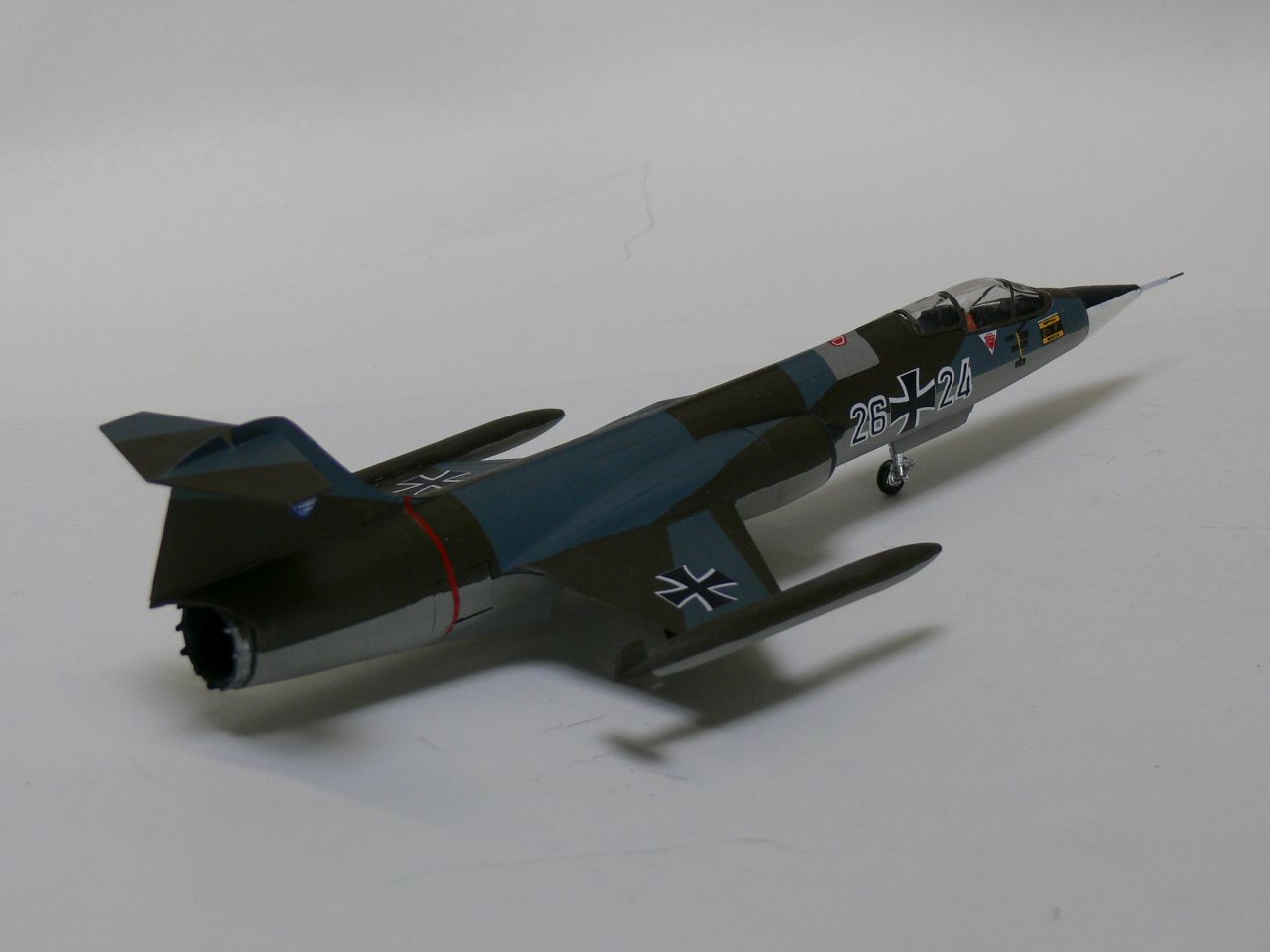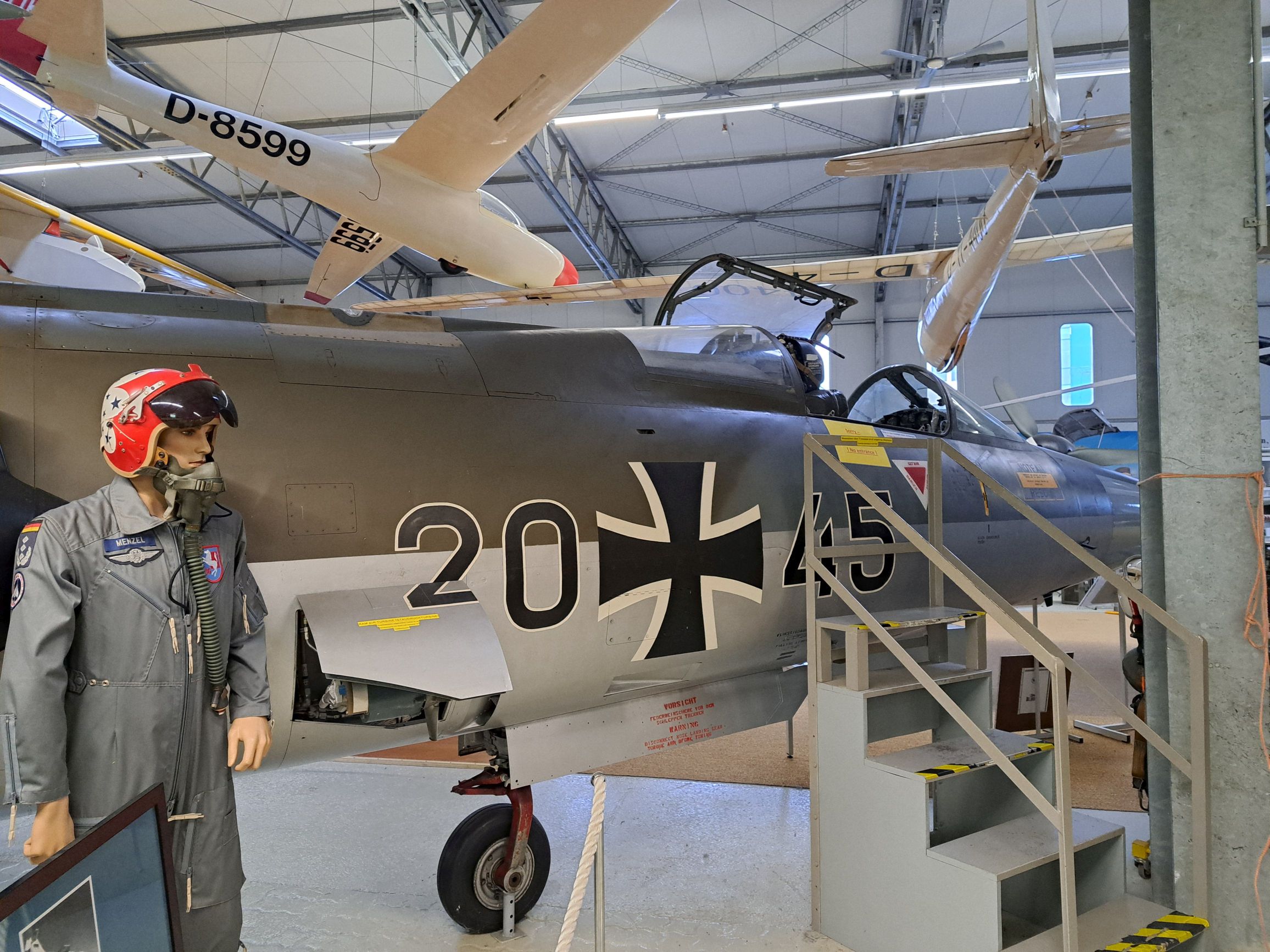Model of the month february 2024 Lockheed F-104 G
Mixed feelings...
The Lockheed F-104 G 'Starfighter'
From the original to the model
An independent part of the collections of the Hanover-Laatzen Aviation Museum are the more than 1,000 scale models, primarily of the international standards 1/72, 1/48 and 1/32.
Such true-to-original miniatures allow viewers of museum technology history to gain an "overview", not only of the individual exhibit (sometimes even as the only possibility of a real three-dimensional display if there is no surviving original), but also of the lines of development of aircraft construction through possible sequencing and juxtaposition. Sometimes they even close gaps in the presentation of the originals. The quality of their craftsmanship alone is a pleasure to behold.
Today, in our 'Model of the Month' series, we present one of the most famous, technically pioneering and controversial designs in aviation history: The F-104 'Starfighter', the first real Mach 2.2 aircraft and multiple world record holder. In the Federal Republic of Germany in particular, however, the military jet also became synonymous for uncontrollable high technology.

The F-104 G can be viewed in the original and all common model scales in the Aviation Museum.
The models: All about the prototype...
Around our original, an F-104 G of the Luftwaffe, we are showing several scale models of this fighter aircraft from the 1950s. Almost all kit manufacturers have had this type in their program in various scales for around sixty years now; in this country - if we remember correctly - Airfix, FROG and Revell were the most popular suppliers in 1/72, Monogram brought an excellent 1/48 kit to market; Hasegawa from Japan launched an outstandingly detailed kit in 1/32 at the end of the seventies.
And the small company Dahlmann, based in Hildesheim (Germany), reissued several former Faller aircraft models of the 1950/60s, including the F-104 G, around 2000. Partly reworked, the kits in German architectural scale 1/100 conveyed a charming reminiscence of the great days of model making.

The Starfighter in the model in the display case of the two German air forces from 1956 to 1990 in Hall 2. This 1/72 scale model was built by Jörg Blessmann, Langenhagen.
The original: Wonderbird, Widowmaker
Where pilots still rave today that there has never been a more fascinating form of flying, others say it was a billion-dollar grave and even worse: a perfect widowmaker. And both sides are probably right.
But let's start at the beginning. During the Korean War, the USA and its allies were constantly being shocked. One particularly violent one was the MiG 15 (the original is in our museum!), a Soviet-Russian interceptor that could only be nearly controlled by the US Air Force's best fighter, the F 86. In western opinion then, the "Reds" could not be so close the USAF performance limit. The answer took off from the ground on March 4, 1954: the Lockheed F-104 'Starfighter'. A superlative that was to show where the new limit is located: basically a record-breaking aircraft ready for series production, whose strengths were not the answer to the MiG 15, but which underpinned the USA's claim to be the world's leading military power.

The standard configuration of the F-104 G included additional tanks at the wingtips ("tiptanks") and underfuselage launch rails for the Sidewinder missiles.
The single-seat, single-engine interceptor was the first aircraft to reach twice the speed of sound, i.e. Mach 2.2, and the first to hold world records for climbing, altitude (31,000 m!) and speed (up to 2,717 km/h!). Especially for this 17 m long, very slim aircraft with extremely thin trapezoidal wings of only 6.36 m wingspan, a missile armament was introduced, which then became the NATO standard: the short-range weapon 'Sidewinder' with an infrared homing head. The General Electric GE J79 GE-11A axial-jet engine was also developed specifically for the Starfighter (incidentally by the German-born former Luft Hansa designer Gerhard Neumann), which came too late for the prototype and the first production aircraft, but subsequently powered the F-4 Phantom and the B-58 Hustler as well as the F-104.
Task accumulation
At the end of the 1950s, Lockheed then offered a version of the F-104 as a multi-role fighter aircraft. The USAF gratefully declined and withdrew its F-104 interceptor versions A to D from service around the mid-1960s, but for the USA's allies from Canada to Japan to the Federal Republic of Germany, the procurement and licensed construction offered the opportunity to acquire high technology and catch up with the USA in terms of armaments technology.

However, when this version G entered service in 1960, it became clear that it was not possible to conjure up a multi-role fighter from a fair-weather interceptor and that the German Air Force in particular, after almost 15 years of enforced abstinence, was not yet in a position, either technically or in terms of personnel, to perform such a balancing act between Mach 2.2 and the accumulation of tasks in narrow European airspaces in frequent bad weather conditions. An aircraft packed with the necessary structural reinforcements, applications and weapons was supposed to be a fighter, fighter-bomber, reconnaissance aircraft and naval combat aircraft all at the same time: Almost a third of the 917 F 104 Gs then procured for the Bundeswehr fell from the sky, 116 pilots lost their lives and several more survived seriously injured. This war-close to war loss rate led to massive uncertainty in the Bundeswehr and society and triggered the biggest armaments crisis in the Federal Republic of Germany to date, which could only be overcome with fundamental analysis, high investment and far-reaching measures. So the "hammer" became the anvil that everyone was now hitting - because now, of course, everyone had known it beforehand...
Icon and symbol
Its successor, the F-4 Phantom II, joined the Luftwaffe in the early 1970s and proved its worth. However, the Starfighter, redesigned and now flown with "real understanding", continued to serve inconspicuously in the Luftwaffe until 1991, but never lost its reputation in this country as an unlucky bird and widowmaker. Incidentally, all other users of the type had a tolerable accident rate, with the Italians being the last nation to retire their F-104s at the turn of the millennium.

sb
You can contact the author of the Model of the Month series here: Autor-MdM
